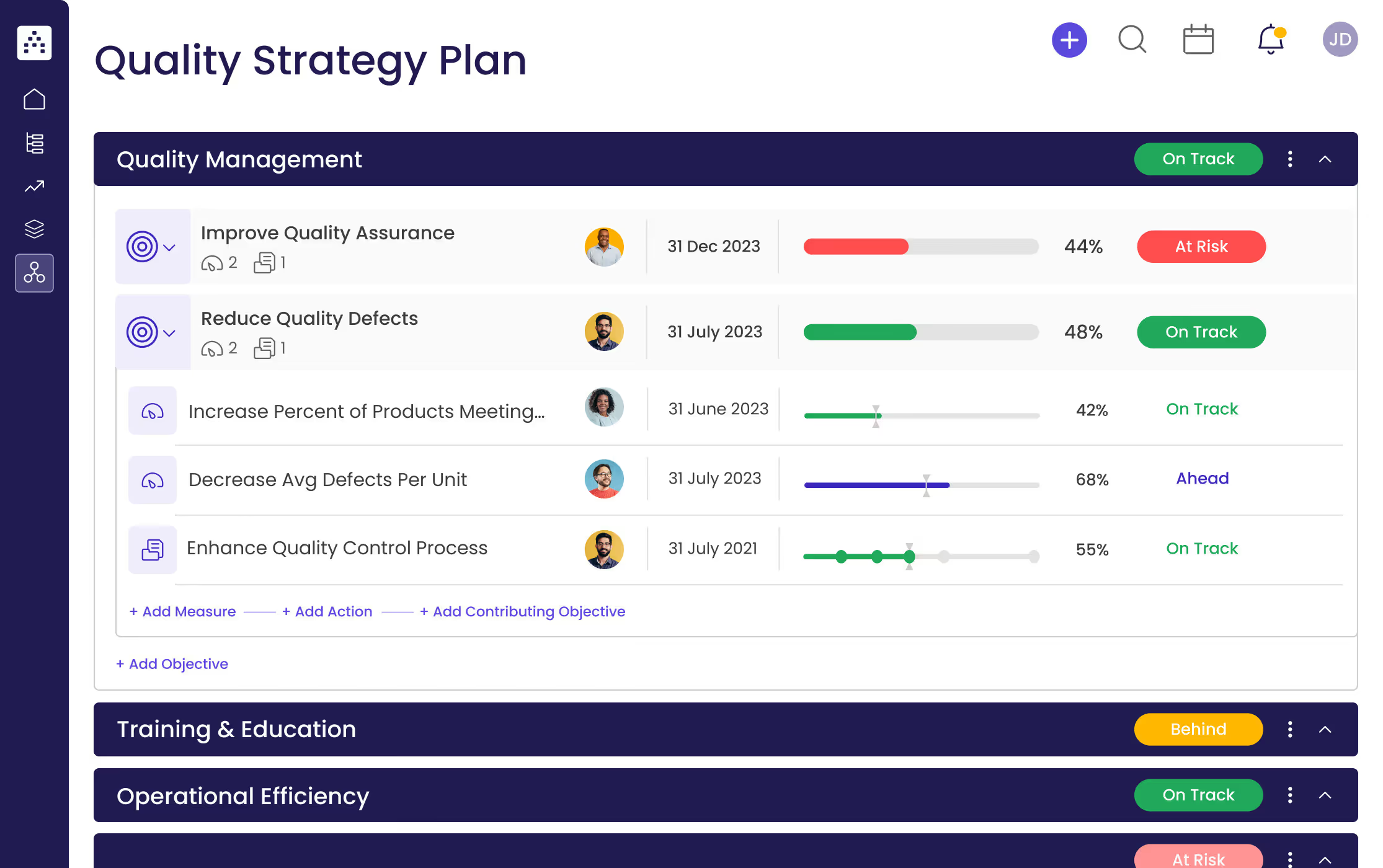What is a Quality Strategy?
A quality strategy is a plan designed to ensure that an organization meets all applicable quality standards. This strategy defines the quality objectives and requirements that an organization needs to meet. It outlines the processes, activities, and tools that are needed to achieve these objectives and requirements. The quality strategy should also include measurable goals and objectives that can be used to track progress and measure success.
What's included in this Quality Strategy template?
- 3 focus areas
- 6 objectives
- 6 projects
- 6 KPIs
Each focus area has its own objectives, projects, and KPIs to ensure that the strategy is comprehensive and effective.
Who is the Quality Strategy template for?
This quality strategy template is designed for quality teams that need to create a strategy to ensure that their organization meets all applicable quality standards. This template will provide you with the framework to create an effective quality strategy that will help your organization meet its quality objectives and requirements.
1. Define clear examples of your focus areas
When creating a quality strategy, it is important to define your focus areas. Your focus areas are the areas of your organization that need to be improved in order to meet quality objectives. Examples of focus areas could include Quality Management, Training & Education, and Compliance.
2. Think about the objectives that could fall under that focus area
Once you have defined your focus areas, you should think about the objectives that could fall under that focus area. Objectives are goals that need to be achieved in order to meet the quality objectives. Examples of objectives could include Improving Quality Assurance, Reducing Quality Defects, Improving Employee Knowledge, and Increasing Employee Efficiency.
3. Set measurable targets (KPIs) to tackle the objective
Once you have identified your objectives, you should set measurable targets (KPIs) to tackle the objective. KPIs are measurable goals that can be used to track progress and measure success. Examples of KPIs could include increasing the percent of products meeting quality standards, decreasing the average defects per unit, increasing the percent of employees trained, and decreasing the average time to complete a task.
4. Implement related projects to achieve the KPIs
Once you have identified the KPIs that need to be achieved, you should implement related projects to achieve them. Projects (Actions) are initiatives that need to be completed in order to reach the KPI. Examples of projects could include enhancing quality control processes, increasing defect detection rate, implementing quality education, and improving quality auditing.
5. Utilize Cascade Strategy Execution Platform to see faster results from your strategy
Cascade Strategy Execution Platform is the perfect tool to help you achieve your quality objectives. This platform helps teams quickly create, implement, and track strategies to ensure that their organizations meet all applicable quality standards. With Cascade, you can easily create a customized quality strategy template and track progress with powerful analytics and reporting tools.


